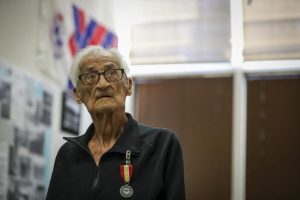How long will it take for the U.S. Army’s V Corps to deploy a brigade to Eastern Europe and begin conducting operations alongside NATO allies? Less than a week.
That’s what was demonstrated by Operation Griffin Shock, a new exercise that took place in Poland over two and a half weeks in May. The U.S. ally played host to a scenario in which a battalion was rapidly expanded by allied units to a brigade.
Involving more than 3,000 soldiers from eight U.S. units and their enablers, and four other NATO countries — Poland, Romania, Croatia and the U.K., the exercise gave soldiers and officers at all levels experience building up forces swiftly and transitioning to combat.
The ability to generate timely power at scale in Europe is crucial to NATO’s defense of member states as concern over Russian aggression grows on the continent, especially in the east. The exercise showcases NATO capabilities amid Russia’s two recent invasions of Ukraine and its increasing commitment of troops in Belarus, which have put neighboring countries on high alert.
“There’s always been talk of NATO being able to field a nimble response force in order to marshal up its capacity to deter,” said Vladislav Davidzon, a nonresident fellow with The Atlantic Council’s Eurasia Center. “For many years, NATO was a paper tiger. Now, it is necessary for NATO to reinforce its troops in the Baltics, Poland and, especially, Romania. Exercises like Griffin Shock make that possible and in the process send a clear message.”
Operation Griffin Shock came amid an outpouring of international security aid to Ukraine — $37.6 billion from the U.S. since the start of the war in February 2022 — as it continues its fight against a brutal Russian invasion ordered by President Vladimir Putin, which has targeted civilian infrastructure and shaken Europe like no conflict since World War II.
NATO has also become more united due to the conflict — contrary to Putin’s aim of weakening the alliance — and has grown this year with the addition of Finland as its 31st member state. The alliance also hopes to add Sweden by July and boost Ukraine’s nonmember status, with it eventually becoming a member state as well.
The recent high pace of military cooperation between NATO partners, and especially those bordering Russia, Belarus and Ukraine, reflects increasing worry about Russian imperial ambitions. As military planners know, the capacity to respond to invasion decisively is essential to dissuading attacks.
The bulk of military exercises focus on combat at the individual or small-unit level, but few explore the transition that brings those units into a fighting posture. Operation Griffin Shock gave battalion and brigade staffs an opportunity to practice coordinating that transition and deconflicting the use of resources and roads.
It was a rare opportunity: Exercises at the battalion level and above are difficult to organize. These exercises give leaders the chance to test systems and meet high-level decision-makers. Establishing a brigade and running operations are critical components to being able to mount an effective defense in the event of war.
“When we look at armies that perform well in combat, they tend to be armies that train in war-like conditions at echelon,” said retired Maj. Gen. Patrick Donahoe, who commanded the U.S. Maneuver Center of Excellence at Fort Moore, Georgia, from July 2020 to July 2022. “Usually, simulations play a large role in this training, especially at the higher echelons. But the U.S. learned in the Cold War that nothing replaces the actual moving of heavy metal and engaging in force on force fights.”
Donahoe said that hard-fought battles in Korea and Vietnam underlined the importance of unit preparedness during the Cold War, and inspired the Reforger and Team Spirit exercises in Europe and Korea, respectively. One exercise, Reforger 88, was reported to have involved more than 125,000 soldiers, the largest maneuver force active in Europe at that time since WWII.
Combat in Ukraine has involved numerous brigades and tens of thousands of soldiers. The U.S. military hasn’t seen fighting at that scale for decades, and is rebuilding the capacity to operate quickly and effectively with its NATO partners.
That means carrying out missions using different platforms, employing forces in which the troops speak different languages, and relying on infrastructure that may not be adequate.
Retired Lt. Gen. Ben Hodges, who commanded U.S. Army Europe from November 2014 to December 2017, estimated Tuesday at the GLOBSEC forum in Bratislava, Slovakia, that Germany has the rail assets to “move only one-and-a-half brigades and equipment through Europe at a time,” much less than would be needed if war came to Poland or other NATO allies, according to reporting by Stars and Stripes. Under such circumstances, speed would be of the essence.
But the exercise this month in Poland with the Army’s V Corps gave planners and leaders an opportunity to check systems, and bring the units that are on the ground closer to where they need to be in case of an emergency.
“Griffin Shock demonstrated a capability,” Donahoe said. “It was invaluable training. More importantly, the demonstration of the capability should have a tremendous deterrent effect on the adversary.”
— Adrian Bonenberger, an Army veteran and graduate of the Columbia University Graduate School of Journalism, reports for Military.com. He can be reached at adrian.bonenberger@monster.com.
Please rate this CIBA article
Vote






